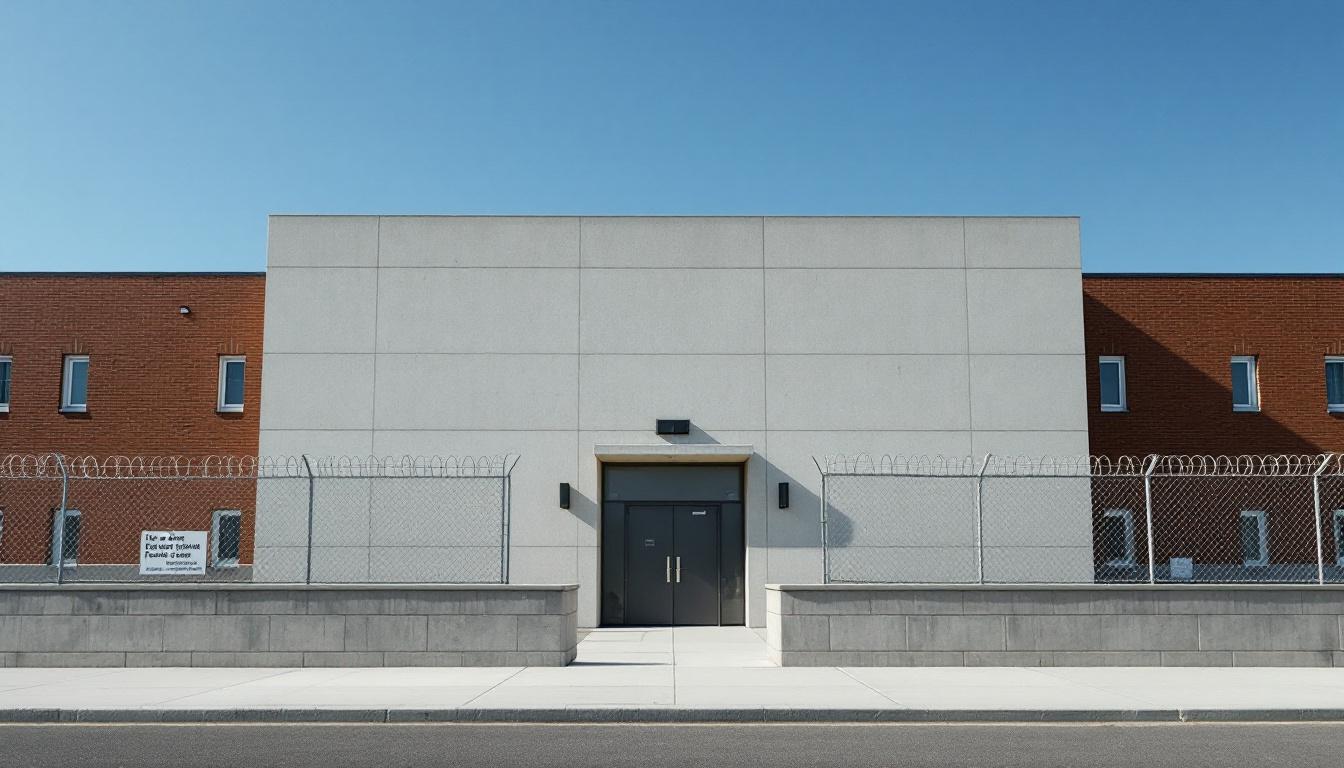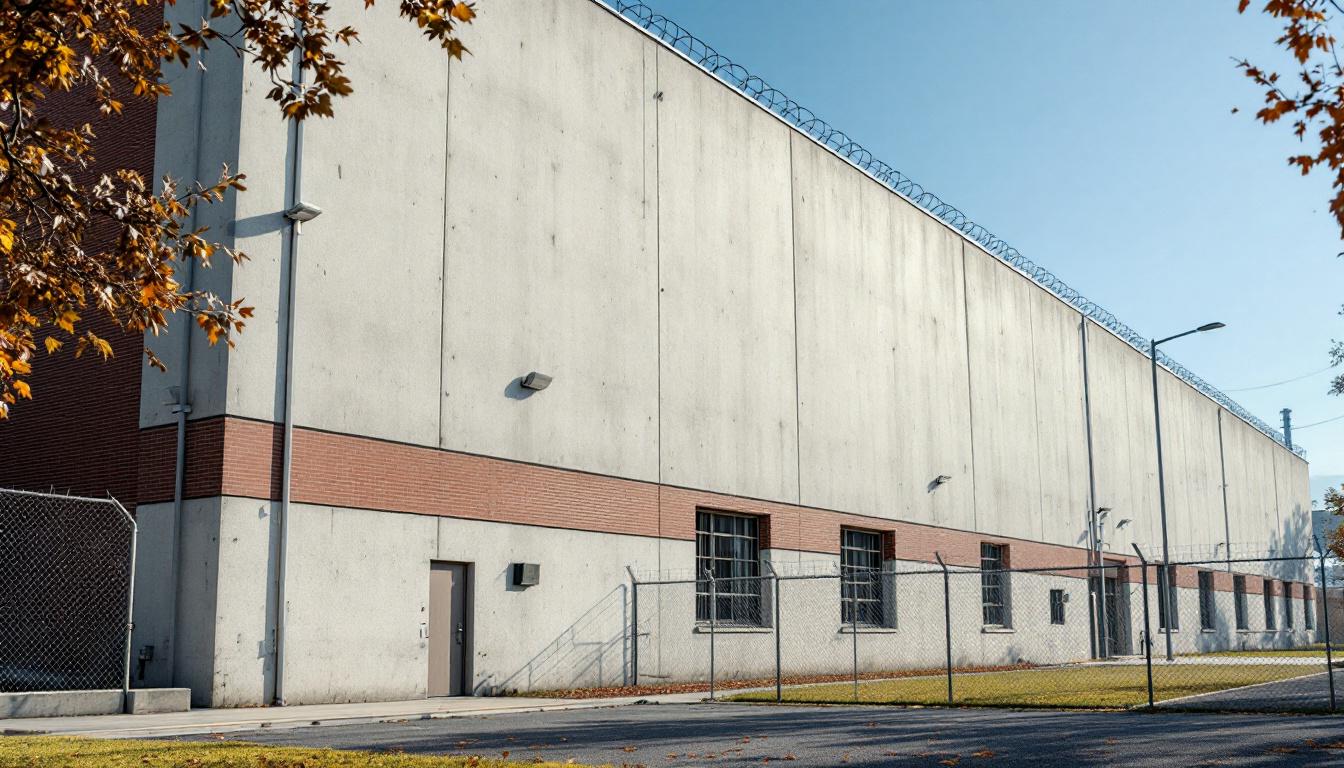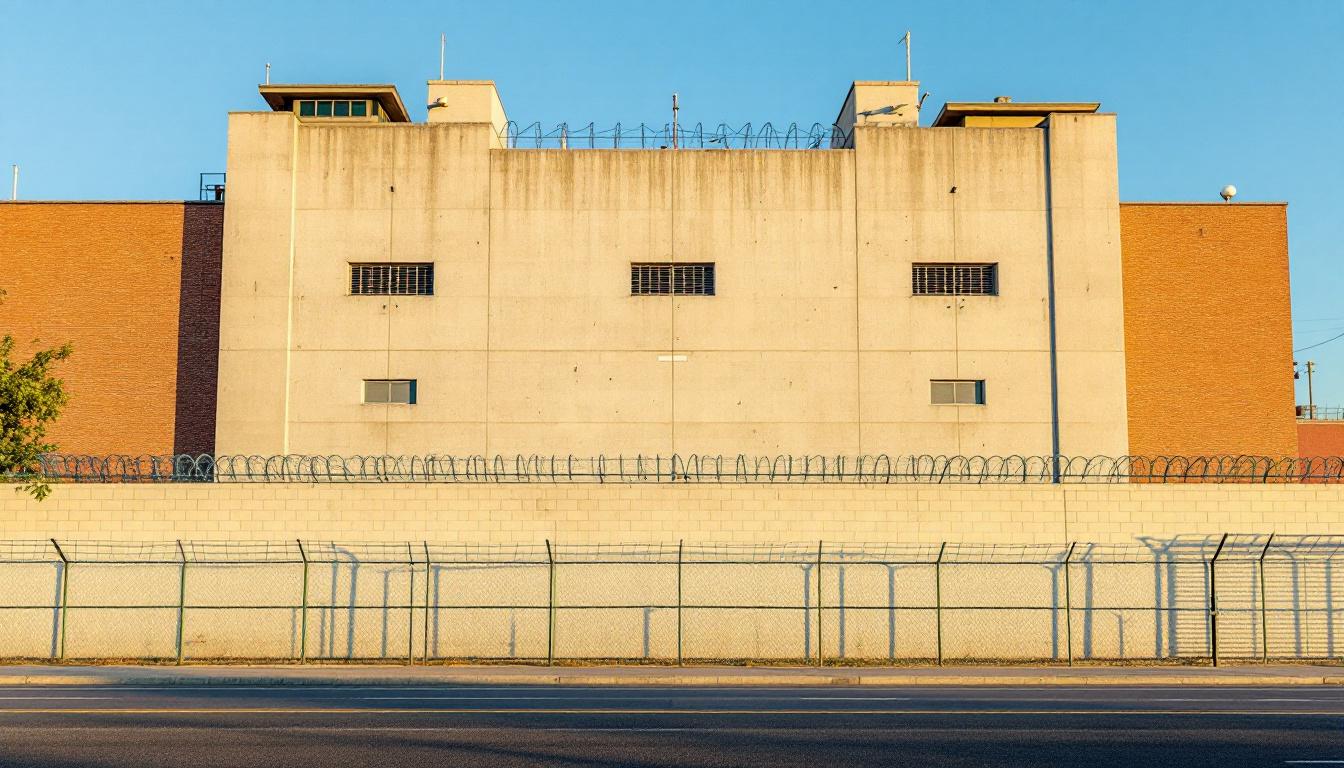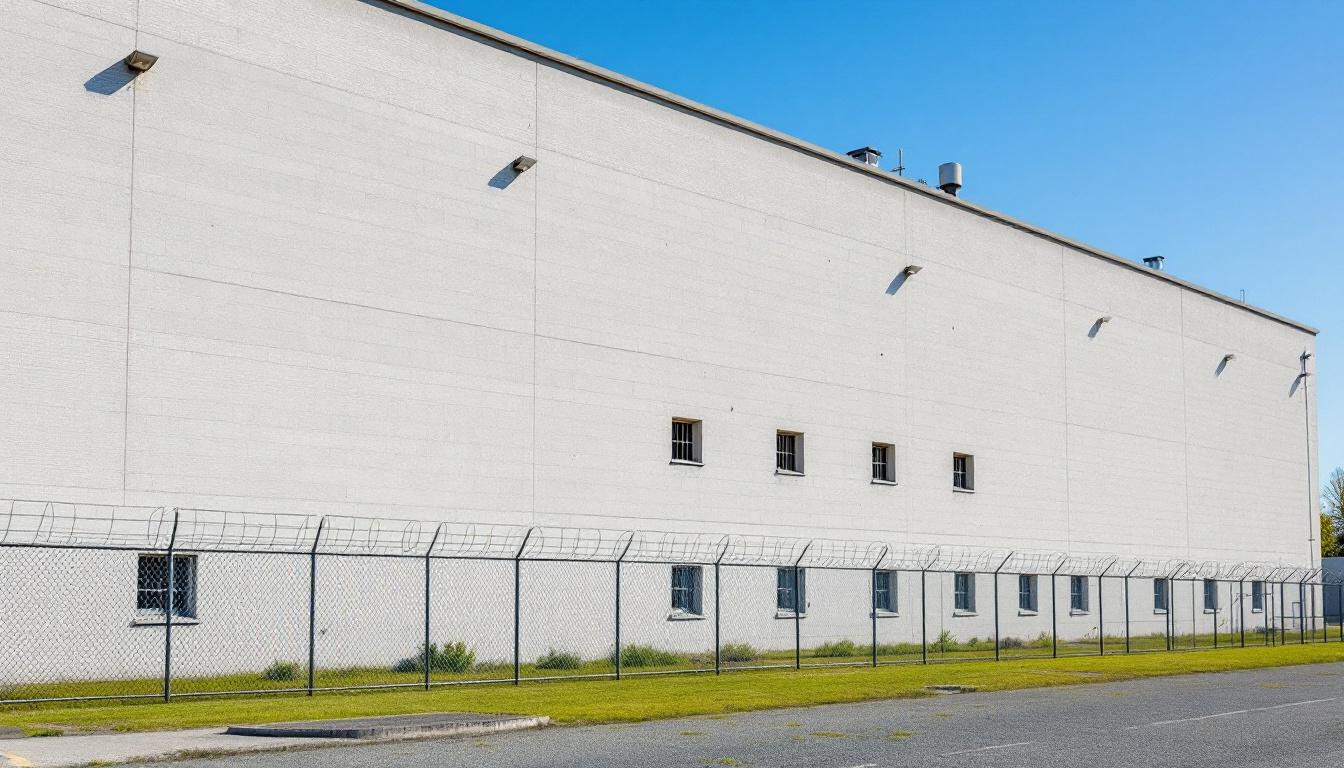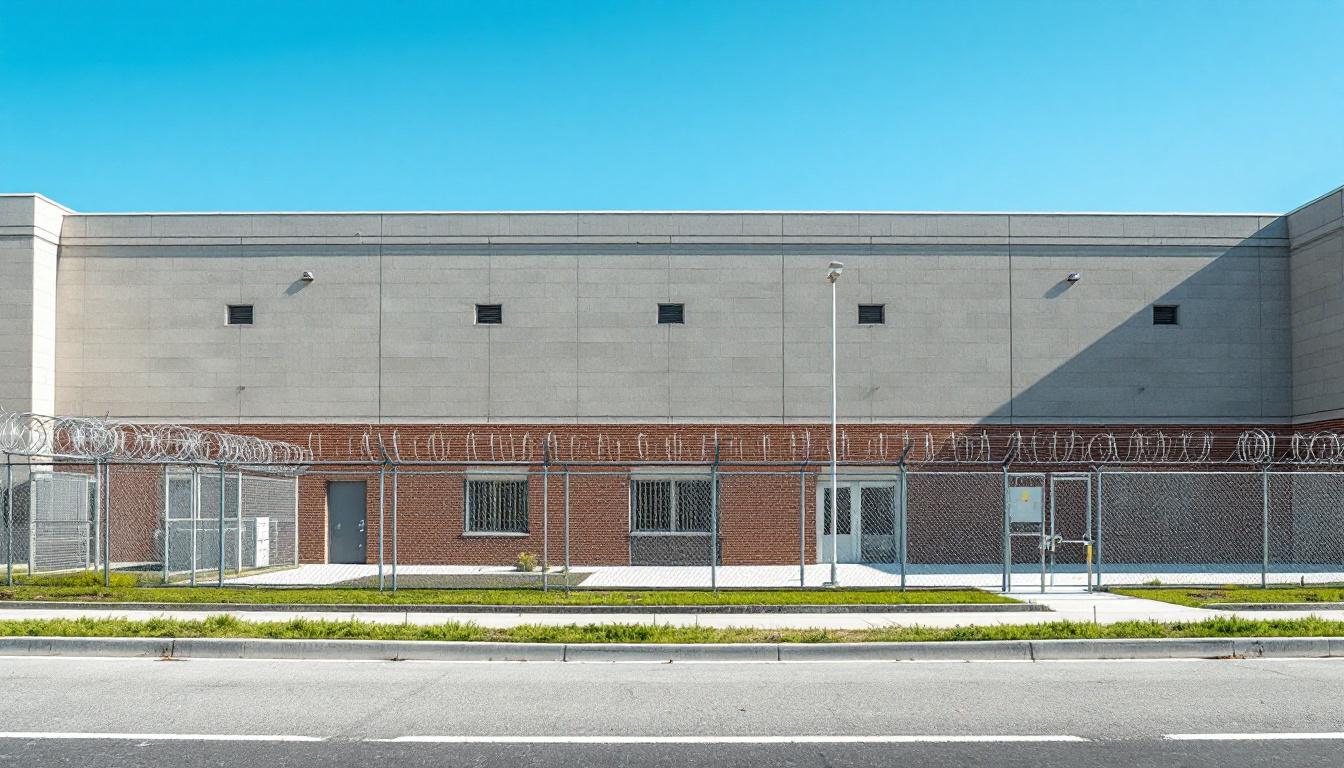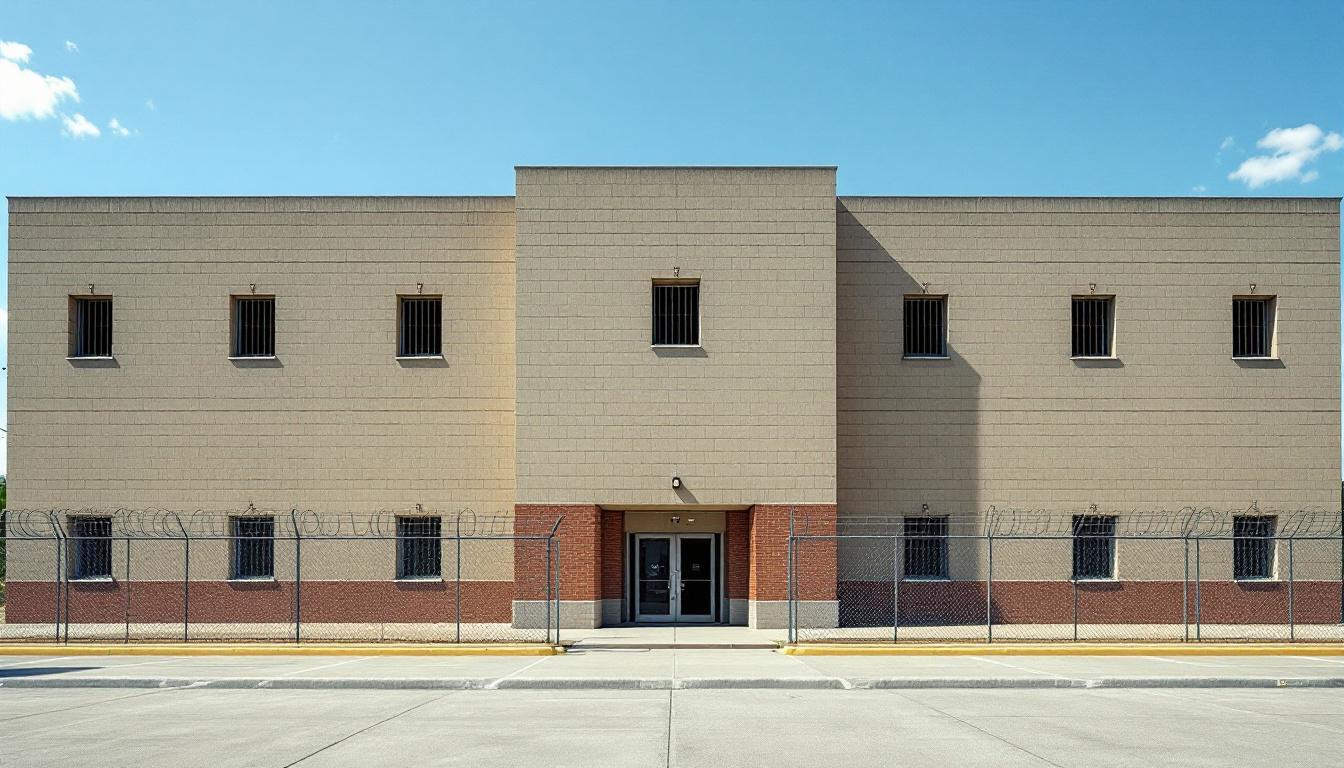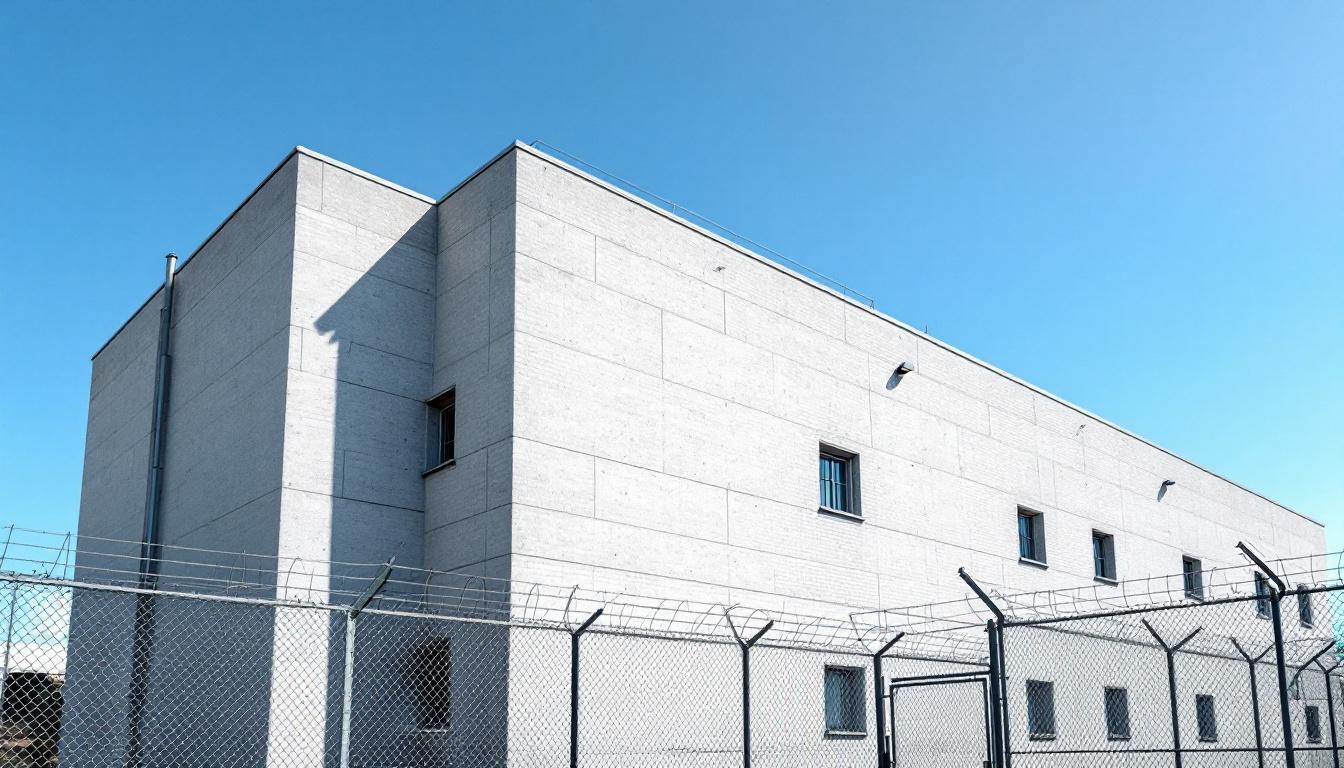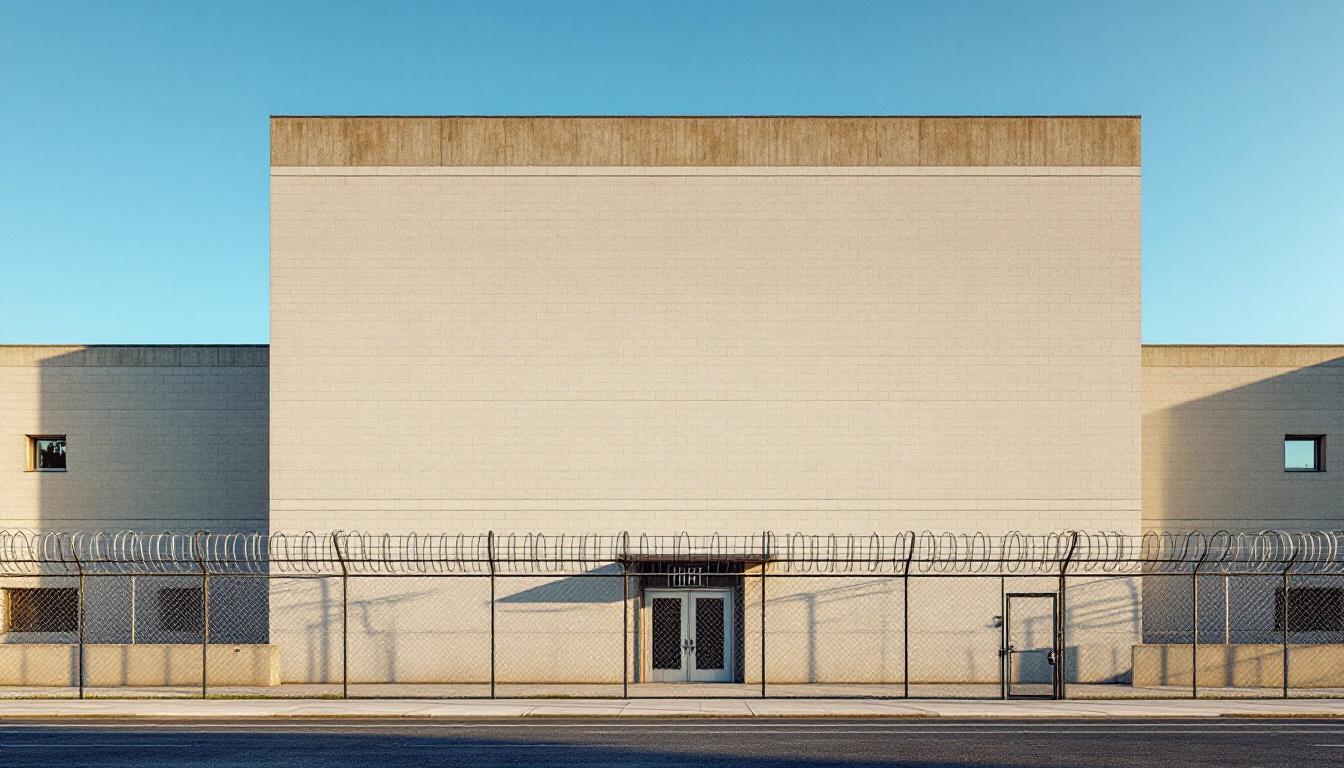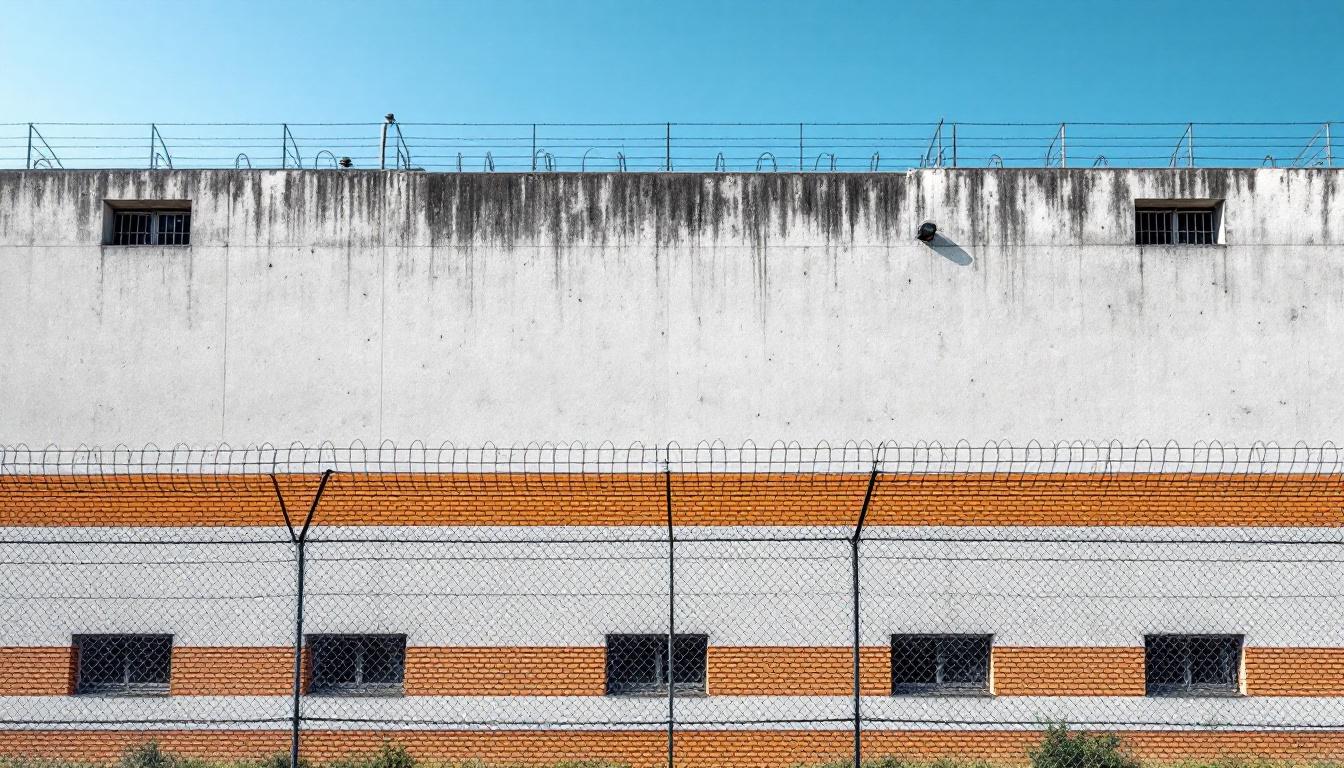
Quick Navigation
How to contact an inmate at Manzanita Unit Visit-Arizona State Prison Complex- Tucson
This comprehensive guide will walk you through how to connect with an inmate at Manzanita Unit Visit-Arizona State Prison Complex- Tucson. Follow the steps below to find an inmate and send letters and photos:
- Search for the inmate using our search tool below
- Create your account or log in to Penmate
- Write your message (up to 6,000 characters)
- Send instantly - inmates receive printed copies daily
Find an Inmate
Search for an inmate to start communicating today
Tip: You can search by first name, last name, or inmate ID number
To contact a person at Manzanita Unit Visit-Arizona State Prison Complex- Tucson start by searching for the person on the official facility website. Perform a search by following these steps:
- Step 1: Enter their first name and last name into the search form and click "Search"
- Step 2: Locate their inmate record
- Step 3: Write down their Inmate ID and any housing information provided
Important! Be sure to enter the person's full name. Nicknames should not be used.
How to Send Messages to Inmates

You can use your phone or computer to send emails, letters, and photos to an inmate. Messages are sent electronically to inmate tablets or kiosks at the facility. If you would like to send a message, start by searching for an inmate at Manzanita Unit Visit-Arizona State Prison Complex- Tucson.
Sending Photos and Postcards

A great way to send love and support to a loved one at Manzanita Unit Visit-Arizona State Prison Complex- Tucson is to send photos and postcards. It only takes a few minutes to send photos from your phone and it makes a huge difference. You can also mail postcards with words of support and inspiration, or design your own postcard for special moments like birthdays and holidays.
Important! Be sure not to send any explicit photos or they may not be approved by the facility. You can also use a photo printing app like Penmate to make sure your photos are printed at the correct size (4x6 or 3x5) and are mailed according to the rules and regulations of Manzanita Unit Visit-Arizona State Prison Complex- Tucson.
Frequently asked questions about Manzanita Unit Visit-Arizona State Prison Complex- Tucson
-
How long does it take to deliver a message?
If you're sending an email message your letter is usually delivered within 24-48 hours. For messages sent via mail you should expect delivery within 3-7 days. All messages will need be approved by Manzanita Unit Visit-Arizona State Prison Complex- Tucson.
-
How much does it cost to send a message to Manzanita Unit Visit-Arizona State Prison Complex- Tucson?
You can send a message free using your phone or mail a message via USPS for the price of a $0.60 stamp and envelope. You can also purchase credits or e-stamps from services starting at $1.99.
-
What services can I use to contact an inmate at Manzanita Unit Visit-Arizona State Prison Complex- Tucson?
Penmate
You can use Penmate to send letters and photos to an inmate from your phone. It's an easy way to stay in touch during your loved one's incarceration. Use the inmate locator to find an inmate's location and contact information, then you can send messages within a few minutes.
Securus messaging
Securus may be another option for communicating with an inmate at Manzanita Unit Visit-Arizona State Prison Complex- Tucson. You can create a friends and family account and purchase credits to send messages. All messages will be reviewed and must be approved by the facility.
JPay
Some county jails and state prisons may support sending messages with JPay. You must register an account with the system, find your loved one, and purchase stamps to send messages. For some locations you can also attach photos.
Smart Jail Mail
You may also check if Smart Jail Mail is available at Manzanita Unit Visit-Arizona State Prison Complex- Tucson. Smart Jail Mail is operated by Smart Communications and has contracted with some state and county jails. After purchasing credits, your messages and photos are sent to the facility, printed out, and then handed out to your loved one.
-
What is the mailing address of Manzanita Unit Visit-Arizona State Prison Complex- Tucson?
Mailing address:
Manzanita Unit Visit-Arizona State Prison Complex- Tucson
10000 S Wilmot Rd
Tucson, AZ 85756
Phone: (520) 574-0024 ext. 37415Business hours:
- Monday: 8:00 AM – 4:00 PM
- Tuesday: 8:00 AM – 4:00 PM
- Wednesday: Closed
- Thursday: 8:00 AM – 4:00 PM
- Friday: 8:00 AM – 4:00 PM
- Saturday: 8:00 AM – 4:00 PM
- Sunday: 8:00 AM – 4:00 PM
-
What are the visiting hours at Manzanita Unit Visit-Arizona State Prison Complex- Tucson?
Visiting hours at Manzanita Unit Visit-Arizona State Prison Complex- Tucson vary by housing unit and security level. Generally, visits are scheduled on weekends and holidays, with some facilities offering weekday visits. Contact the facility directly at (520) 574-0024 ext. 37415 or check their website for the current visiting schedule. Visits typically last 30-60 minutes and must be scheduled in advance.
-
What items are prohibited when sending mail to Manzanita Unit Visit-Arizona State Prison Complex- Tucson?
Prohibited items typically include: cash, personal checks, stamps, stickers, glitter, glue, tape, staples, paperclips, polaroid photos, musical or blank greeting cards, hardcover books, magazines with staples, and any items containing metal or electronics. Only send letters on plain white paper with blue or black ink. Photos must be printed on regular photo paper (no Polaroids). Always check with Manzanita Unit Visit-Arizona State Prison Complex- Tucson for their specific mail policies.
-
How do I send money to an inmate at Manzanita Unit Visit-Arizona State Prison Complex- Tucson?
You can send money to an inmate at Manzanita Unit Visit-Arizona State Prison Complex- Tucson through several methods: 1) Online using JPay, Access Corrections, or the facility's approved vendor, 2) Money orders mailed directly to the facility with the inmate's name and ID number, 3) Kiosks located in the facility lobby, or 4) Over the phone using a credit or debit card. Fees vary by method, typically ranging from $2.95 to $11.95 per transaction.
-
Can I schedule a video visit with an inmate at Manzanita Unit Visit-Arizona State Prison Complex- Tucson?
Many facilities now offer video visitation as an alternative to in-person visits. At Manzanita Unit Visit-Arizona State Prison Complex- Tucson, video visits may be available through services like Penmate, Securus Video Connect, GTL, or ICSolutions. Video visits typically cost $10-20 for 20-30 minutes and must be scheduled in advance. You'll need a computer or smartphone with a camera and reliable internet connection. Contact the facility for their specific video visitation policies and approved vendors.
-
What identification do I need to visit an inmate at Manzanita Unit Visit-Arizona State Prison Complex- Tucson?
All visitors must present valid government-issued photo identification such as a driver's license, state ID, passport, or military ID. Minors must be accompanied by a parent or legal guardian who can provide the minor's birth certificate. Some facilities require visitors to be on the inmate's approved visitation list, which may require a background check. Contact Manzanita Unit Visit-Arizona State Prison Complex- Tucson for specific ID requirements and visitor approval procedures.
-
How can I find out an inmate's release date?
To find an inmate's release date at Manzanita Unit Visit-Arizona State Prison Complex- Tucson, you can: 1) Use the online inmate search tool if available, 2) Call the facility's records department, 3) Contact the inmate's case manager or counselor, or 4) Have the inmate provide this information during a call or visit. For privacy reasons, some facilities only release this information to immediate family members.
Facility Overview
Contact Information
Manzanita Unit Visit-Arizona State Prison Complex- Tucson10000 S Wilmot Rd
Tucson, AZ 85756
Phone: (520) 574-0024 ext. 37415
Official Website

About Manzanita Unit Visit-Arizona State Prison Complex- Tucson
Nestled within the expansive landscape of Tucson, Arkansas, the Manzanita Unit operates as a vital component of the Arizona State Prison Complex-Tucson system, serving the correctional needs of the south region through a comprehensive approach to custody and rehabilitation. This AR correctional facility maintains its commitment to security and rehabilitation by fostering collaborative relationships between correctional staff, program coordinators, and community partners who work together to address the diverse needs of the resident population.
The facility typically emphasizes educational programming and vocational training opportunities that may include basic literacy courses, GED preparation, and various skill-building workshops designed to prepare residents for successful reintegration into their communities. Through detailed assessment processes, staff members generally work to identify individual needs and match residents with appropriate services, which often encompass substance abuse counseling, mental health support, and life skills development. These residents services are typically delivered through a coordinated approach that recognizes the importance of addressing both immediate security concerns and long-term rehabilitation goals.
Within the broader context of Arkansas's correctional system, the Manzanita Unit/ASPC-Tucson, AZ generally maintains operational standards that prioritize both public safety and resident development. The correctional facility may offer various recreational and religious programs that support personal growth and community building among the resident population, while maintaining the structured environment necessary for effective correctional operations in the Tucson area.
Programs & Services
Vocational education and life skills development form the cornerstone of rehabilitation efforts, with residents gaining practical knowledge that directly translates to post-release success. The facility's comprehensive approach recognizes that meaningful change occurs through structured learning opportunities combined with personal growth initiatives. These initiatives typically emphasize skill-building across multiple domains, helping residents develop both technical competencies and the social foundations necessary for community reintegration.
Educational initiatives may deliver vocational training programs that focus on marketable skills, while civic education components help residents understand their roles and responsibilities as community members. The vocational education offerings often include hands-on training in various trades, allowing participants to earn certifications that enhance their employment prospects upon release. In addition to this formal education structure, civic education initiatives typically cover topics such as financial literacy, conflict resolution, and civic responsibility, providing residents with essential knowledge for navigating post-incarceration challenges.
Support services encompass a diverse range of therapeutic and enrichment activities designed to address multiple aspects of personal development. Agriculture programs may offer residents opportunities to learn sustainable farming practices while developing work ethic and responsibility through care of crops and livestock. Faith-based services often provide spiritual guidance and community support, while arts and crafts initiatives allow for creative expression and stress management. The upholstery program typically combines practical skill development with therapeutic benefits, teaching residents a valuable trade while promoting focus and attention to detail that serves them well in various life contexts.
Daily Life & Visitation

Structure now governs every aspect of life within the facility, with residents following a carefully planned daily routine that begins before dawn and continues through evening hours. The predictable schedule typically includes designated times for meals, work assignments, educational programming, and recreation, creating a framework that many residents find stabilizing after periods of uncertainty. Count times occur regularly throughout the day, ensuring accountability while maintaining the orderly flow of activities that keeps the facility functioning smoothly.
Living accommodations generally consist of shared housing units where residents maintain personal spaces within dormitory-style or cell-based arrangements. Meals are served in communal dining areas at scheduled intervals, with residents typically receiving three meals daily that meet basic nutritional requirements. The commissary system allows residents to purchase additional food items and personal care products, providing some degree of choice within the structured environment. Personal property is usually limited but may include approved clothing, hygiene items, and reading materials that help residents maintain connections to their identities and interests.
In addition to this daily structure, recreational opportunities typically include access to outdoor exercise areas, indoor fitness equipment, and organized sports activities that promote physical wellness and social interaction. Work assignments often deliver both structure and skill development, with residents participating in facility maintenance, food service, or other operational roles that contribute to the community while providing routine. Despite this controlled environment, family connections remain important through scheduled visitation periods and telephone privileges that allow residents to maintain relationships with loved ones. Educational and vocational programming may also be available, offering residents opportunities to develop skills that support successful reintegration into their communities.
Ready to Connect?
Start communicating with your loved one today
Search for an Inmate
